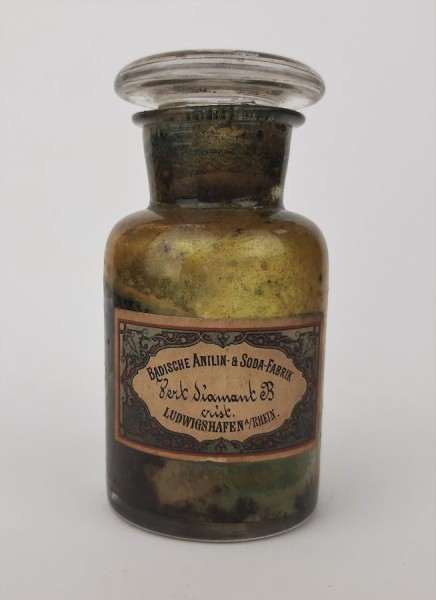
The journey into synthetic and semi-synthetic dyes began with studies in the late 18th century, mainly in Germany, for example, by Barth (indigo carmine, 1743), following studies in France and Britain.
‘Paris Green,’ also known as copper acetoarsenite, is a toxic synthetic green pigment commonly used in the 19th and early 20th centuries as a colorant in paints, wallpapers, fabrics, and even as an insecticide. It has a bright green color was highly valued for its intense hue and durability. It was discovered in the early 19th century, around 1814, by Wilhelm Dye and White Lead Company. Its name, “Paris green,” comes from its bright green color and its use as a pigment in various forms of art and decoration. Unfortunately, Paris Green contains arsenic, a highly toxic substance, which poses significant health risks to those who worked with it or were exposed to materials containing it. It was eventually phased out of use due to its toxicity and replaced with safer alternatives in the latter half of the 20th century.
Paris Green is a historical example of how the lack of awareness about the dangers of certain chemicals and substances could lead to the widespread use of hazardous materials.
The first synthetic dye used in history is often attributed to Sir William Henry Perkin, who discovered the synthetic dye known as mauveine (or mauve) in 1856. Perkin’s accidental discovery of this purple dye while attempting to synthesize quinine from coal tar marked the beginning of the synthetic dye industry.
Fuchsine, or magenta or basic fuchsin, is a bright pink or magenta dye. It was discovered by French chemist François-Emmanuel Verguin in 1858, shortly after Perkin discovered mauveine. Fuchsine was an essential development in synthetic dyes and became widely used in the textile industry.
Aniline is a crucial compound in the production of synthetic dyes. It is a precursor to create various synthetic dyes, including mauveine and fuchsine. The synthesis of aniline from coal tar derivatives was achieved by German chemist Otto Unverdorben in 1826, well before the discoveries of mauveine and fuchsine. The ability to produce aniline from coal tar was crucial for developing synthetic dye chemistry.
The world of carpets is a vibrant tapestry woven with intricate patterns and designs and a rich history of dyeing techniques that spans centuries. Carpets have long been a canvas for artistic expression, with dyeing techniques pivotal in bringing intricate designs to life. The introduction of synthetic dyes, while revolutionary in its own right, brought both innovation and a set of challenges to the world of carpet manufacturing. In this article, I would like to share information about the history of synthetic dyes and their adverse effects on carpets.
The most important discovery in the early history of aniline occurred when Perkin, identified in coal-tar benzene, a related product that he called mauveine, produced purple. Perkin then identified a process to create the first synthetic dyes consistently. Shortly afterward, the French scientist Antoine Béchamp developed a new method of making a range of aniline dyes on an industrial scale. These dyes changed the nature of color production (techniques, economics, social structures) within the textile and carpet industry worldwide. In particular, the production of aniline dyes led to the creation of a massive dye industry in Germany under the name of BASF (Badische Anilin- und Soda-Fabrik), which supplied aniline dyes to many countries around the world at that time. These dyes presented various colors, from brilliant reds to deep blues and lush greens. From the invention of Perkin in 1856 to the publication of the first edition of the Colour Index in 1924, more than 1200 synthetic organic colorants were introduced. Some achieved commercial success, while others were rarely used for high cost, low fastness, and toxicity.
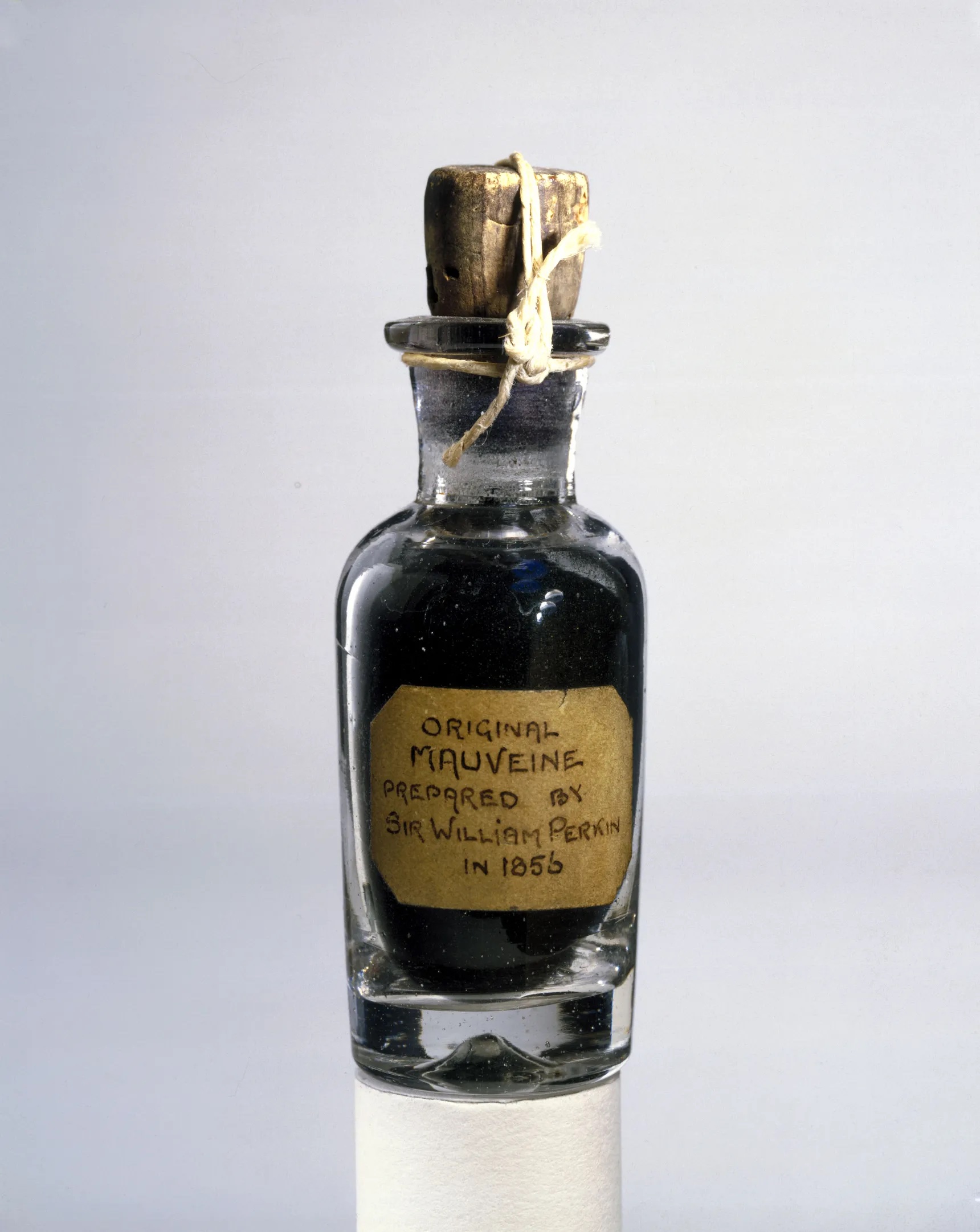 Sir William Perkin’s (1838-1907) original stoppered bottle of mauveine dye was labeled “Original Mauveine.”
Sir William Perkin’s (1838-1907) original stoppered bottle of mauveine dye was labeled “Original Mauveine.”
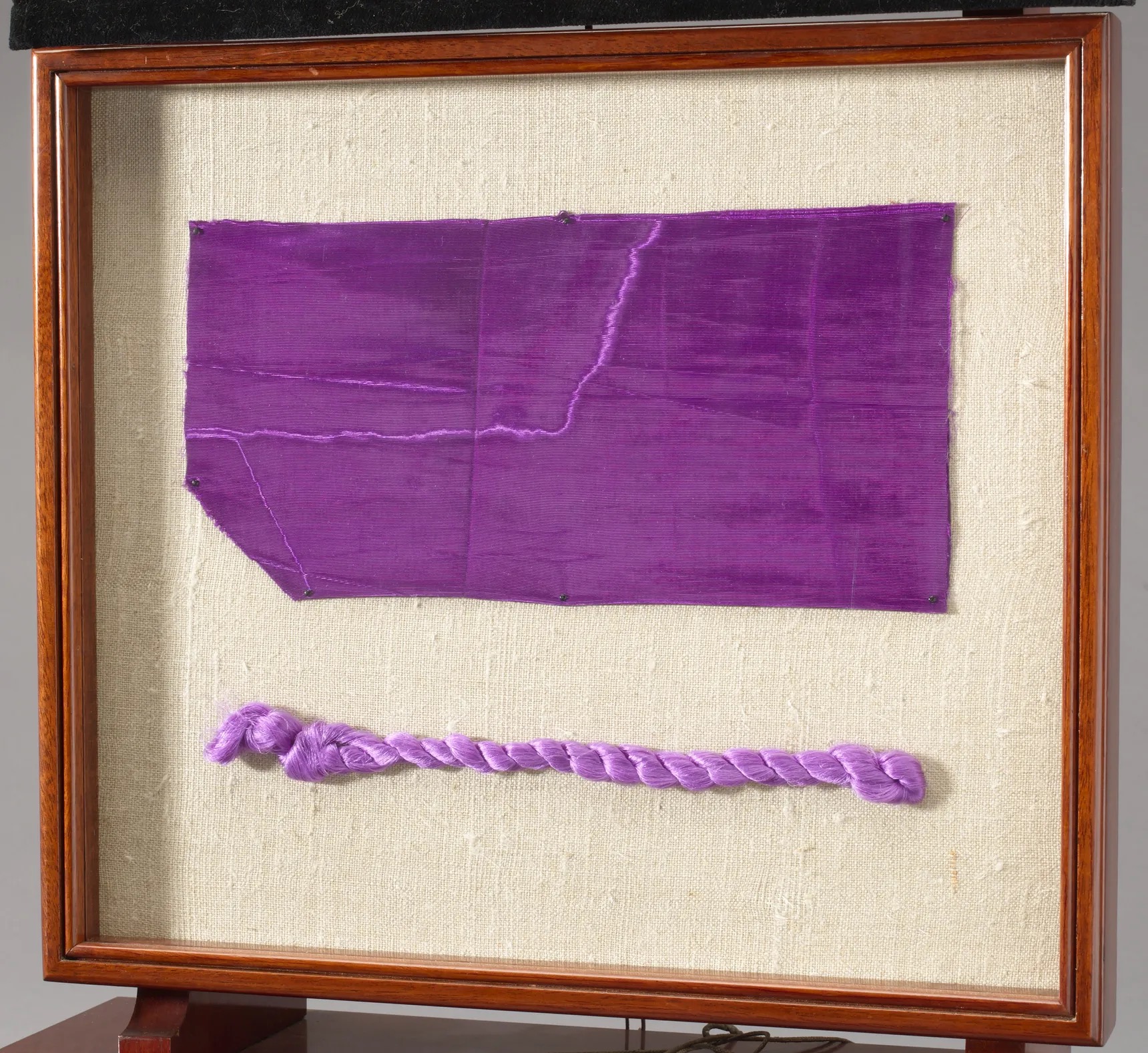 A length of dress fabric and a silk skein dyed with mauveine were mounted in a wooden frame.
A length of dress fabric and a silk skein dyed with mauveine were mounted in a wooden frame.
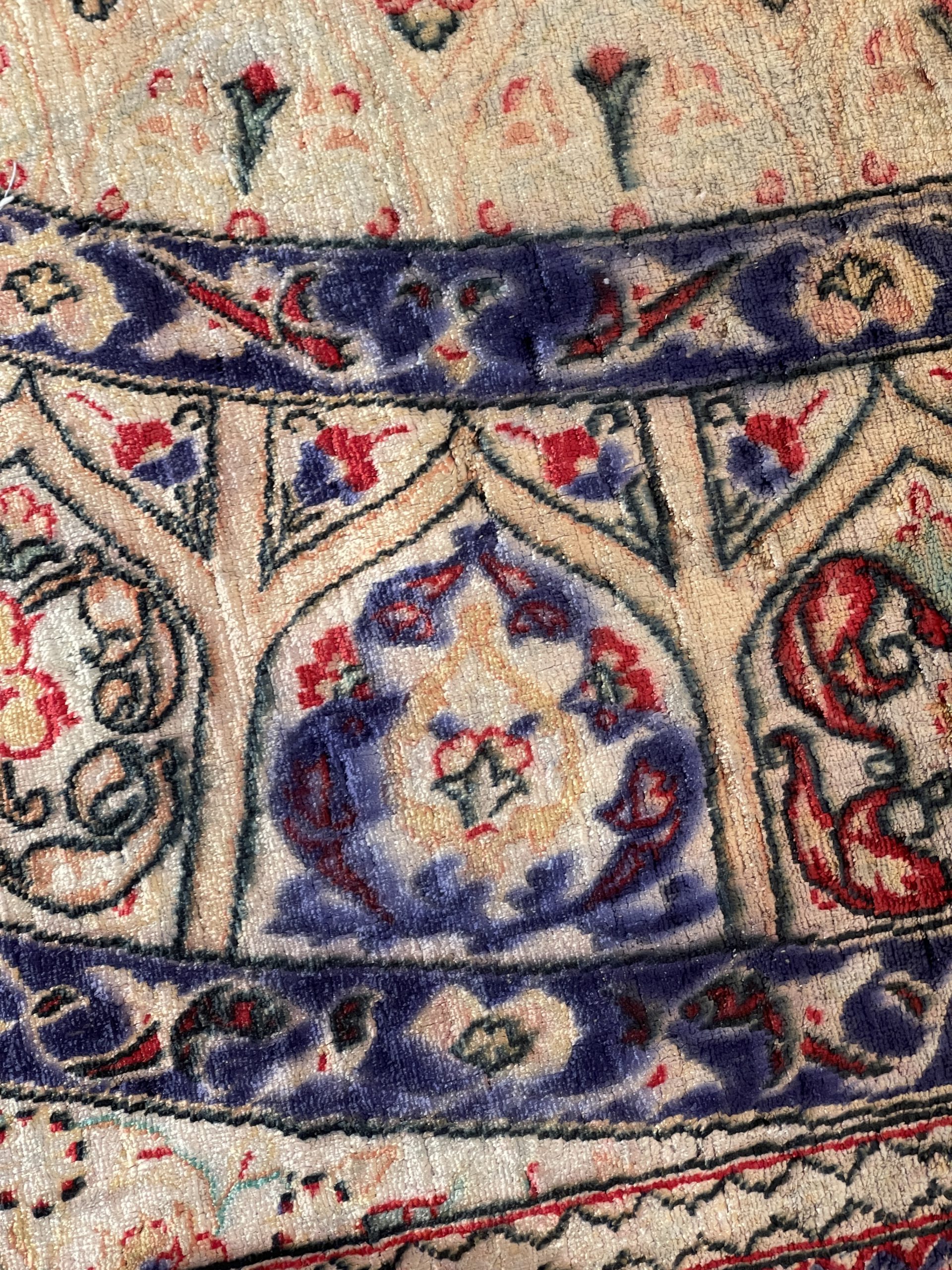 A silk carpet color bleeding, dyed improperly using synthetic dyes
A silk carpet color bleeding, dyed improperly using synthetic dyes
Above the right photo, I would like to share an example of a silk carpet we encountered recently. This carpet’s bleeding color is almost like a watercolor painting when it comes into contact with water or when liquid is spilled on it due to improper dyeing processes.
Unfortunately, many carpets in the market are dyed improperly or using synthetic dyes unconsciously, without knowledge of the material and dyes. Creating vivid and shiny colors for commercial purposes and concerns, deceiving customers, and selling these carpets are unfair to the weavers and customers who buy them.
Fading and Colorfastness: A common thread among these dyes is the issue of fading. The vibrancy they brought to carpets often waned over time due to light exposure, washing, and regular use, leading to losing their original allure.
Color Bleeding ( Dye Bleeding / Dye Run): A chemical bond forms between the wool fiber and the dye substance during the dyeing process. This bonding influences whether or not the color will tend to bleed/run or stick fast onto the fiber. (Colorfastness) Some synthetic dyes can not bond strongly with the fiber. Instead, they stay on the top of the fiber, coloring it superficially rather than bonding to it. When this happens, the color tends to run or bleed when washed in water.
Environmental Concerns: The production of these synthetic dyes generated environmental concerns due to their toxic byproducts and waste. The use of heavy metals in chrome dyes raised questions about their impact on the ecosystem and human health.
Artistry and Authenticity: The advent of synthetic dyes shifted the focus away from traditional dyeing techniques that held cultural and historical significance. This transition impacted the authenticity and uniqueness of handmade carpets, as the brilliance of synthetic colors sometimes overshadowed the subtleties of natural hues.
Cultural Clash: In regions with rich rug-weaving traditions, like Persia, Turkey & Central Asia, the intrusion of synthetic dyes disrupted the cultural significance of traditional color palettes. This clash between synthetic vibrancy and historical resonance strained the cultural identity of carpets.
Future Health Risks: Every new invention also makes us think about the risks that we cannot foresee at the moment that may occur in the future. As a current example, the future effects of COVID-19 vaccines are still a matter of curiosity. We do not know what will happen to us in the future with the synthetic dyes used in carpets or clothes. But natural dyes have been employed for centuries, and their full effects are known.
The harm of lead-containing dyes to our health is evident. The fact that Azo dyes are banned in most of the Western world but still used and not controlled by many countries further reveals our apparent attitude towards opposition to synthetic dyes. It motivates us in our fight for the use of natural dyes.
Introducing synthetic dyes like fuchsine, aniline dyes, and later modern chrome dyes may have expanded the vivid color spectrum in carpet making. Still, their detrimental effects on carpets cannot be overlooked. The fading brilliance, environmental concerns, eroding craftsmanship, cultural discord, and unknown future risks created a complex legacy. As we step onto these carpets, we tread upon a history woven with both the allure and the enduring challenges of synthetic dyes as a reminder of the multifaceted impact on the world of textiles.
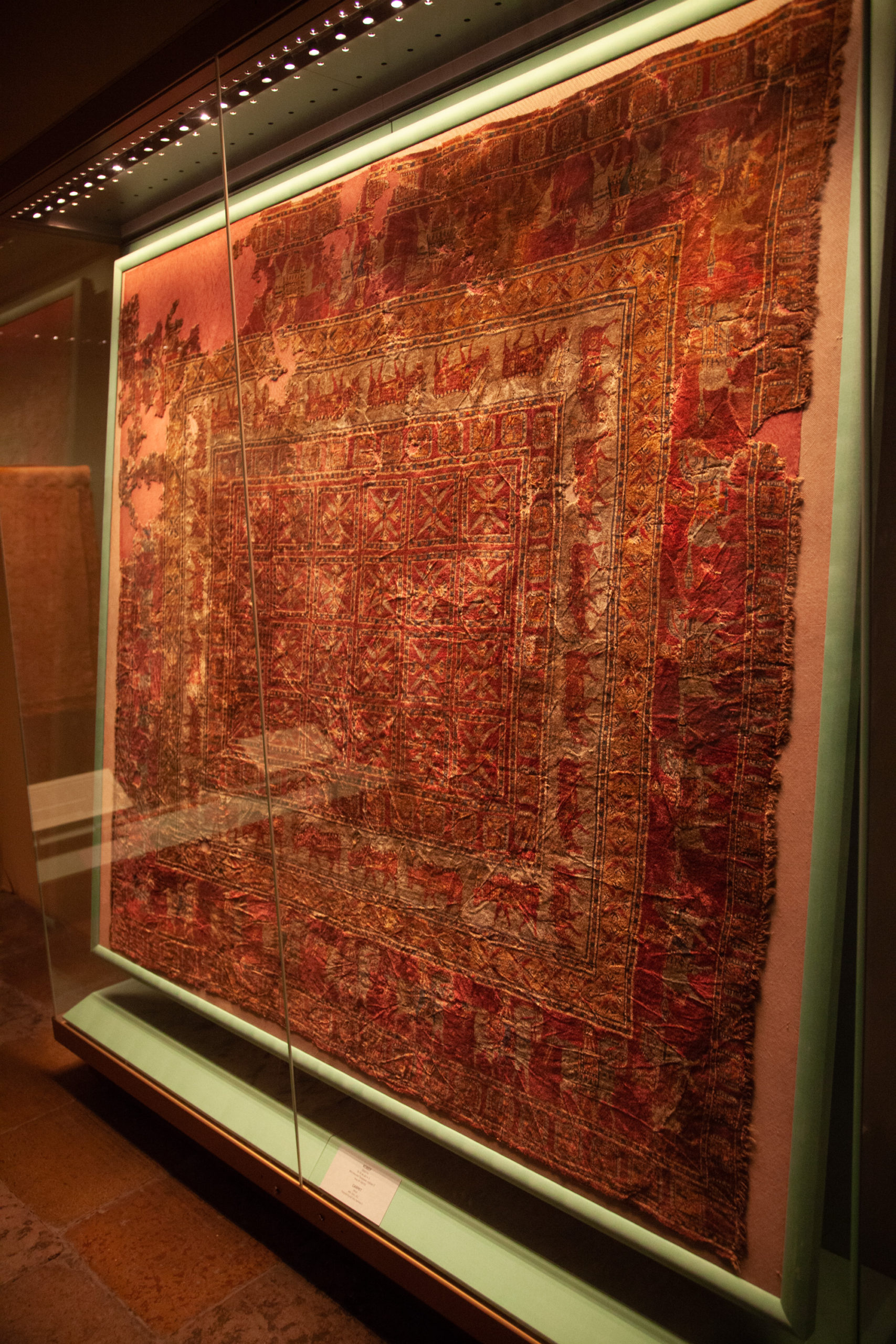 The Pazyryk rug is one of the oldest carpets in the world, dating around the 4th to 3rd centuries BC.
The Pazyryk rug is one of the oldest carpets in the world, dating around the 4th to 3rd centuries BC.
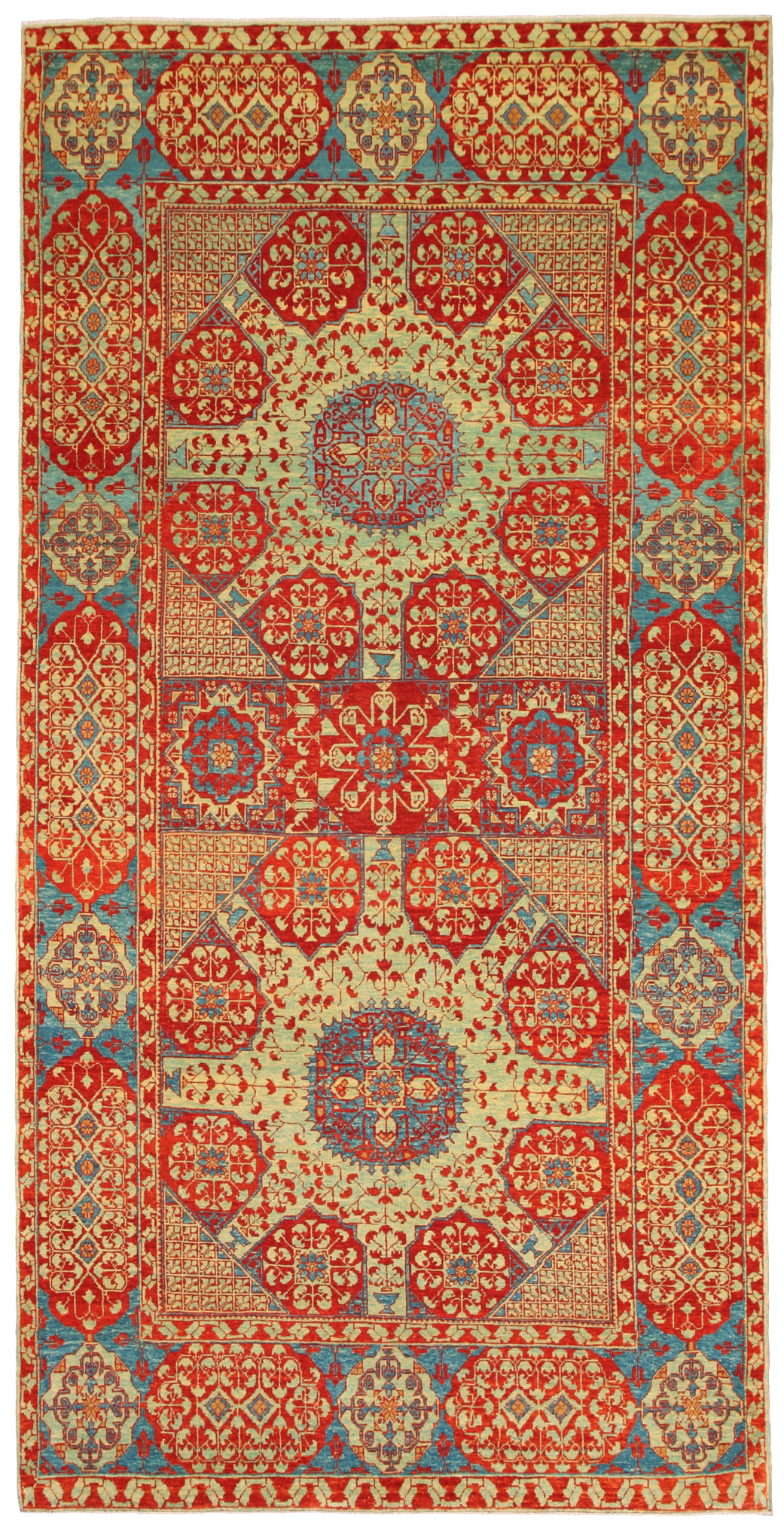
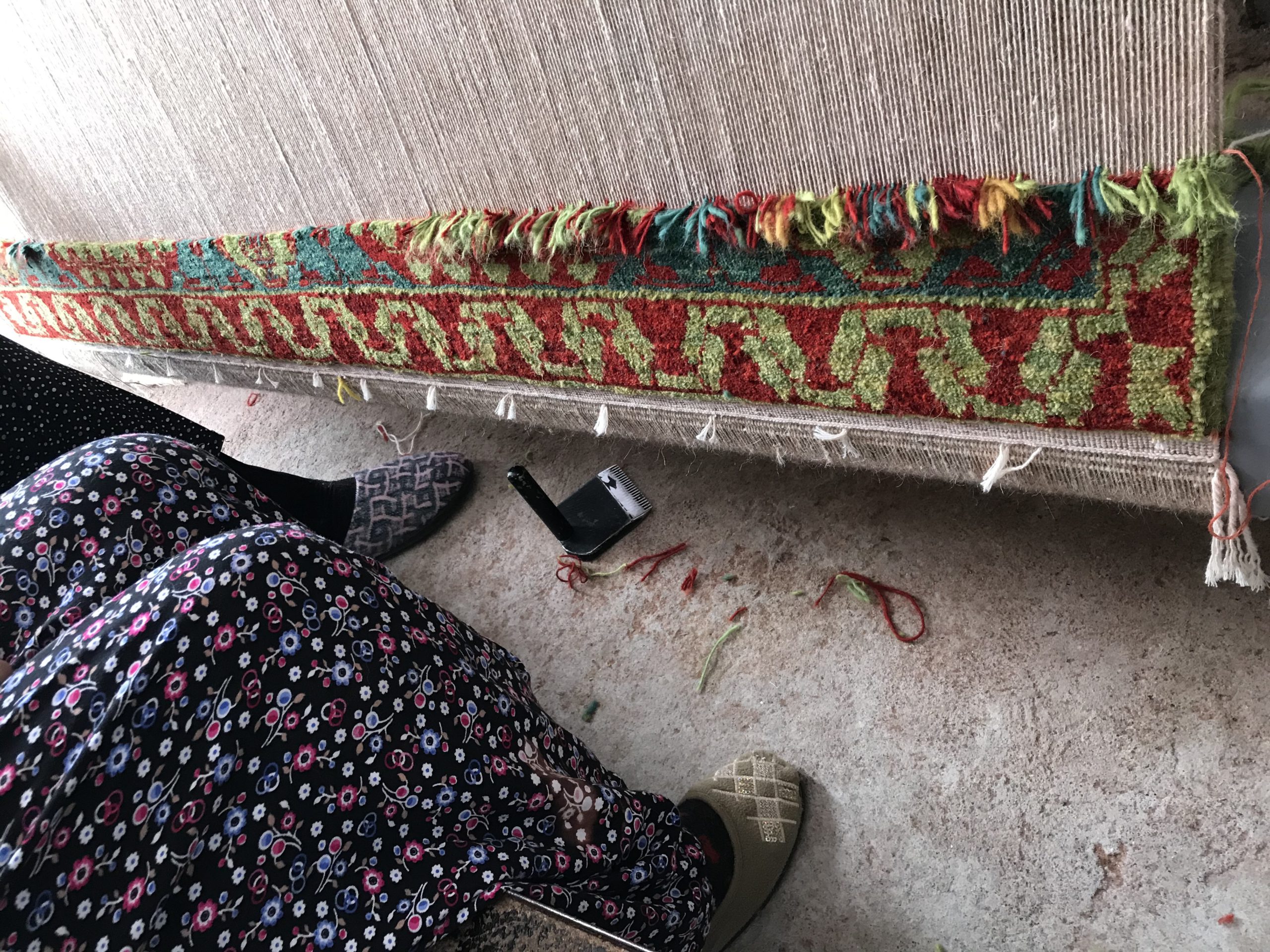 Model: ART00144
Model: ART00144Natural Dyed Mamluk Rug with Cup Motif
The correct dyeing process and mordanting make naturally dyed carpets last centuries, like the Pazyryk Rug above. I’ve had the opportunity to observe examples of these rugs in many museums and the antique carpets I possess. However, I’ve also observed that carpets woven with synthetic dyes, poor wool/cotton & materials/techniques, and even natural dyes with low colorfastness and improper dyeing can last only a few decades.
At Ararat Rugs, we embody our motivation to preserve the art of the East for future centuries by weaving carpets that adhere to the authentic materials of the past, naturally, with traditional techniques, and by incorporating our expertise and accumulated knowledge.
You can experience this in the carpets we produce!
Thank you for your awareness and for reading this important article.
Hakan KARAR
